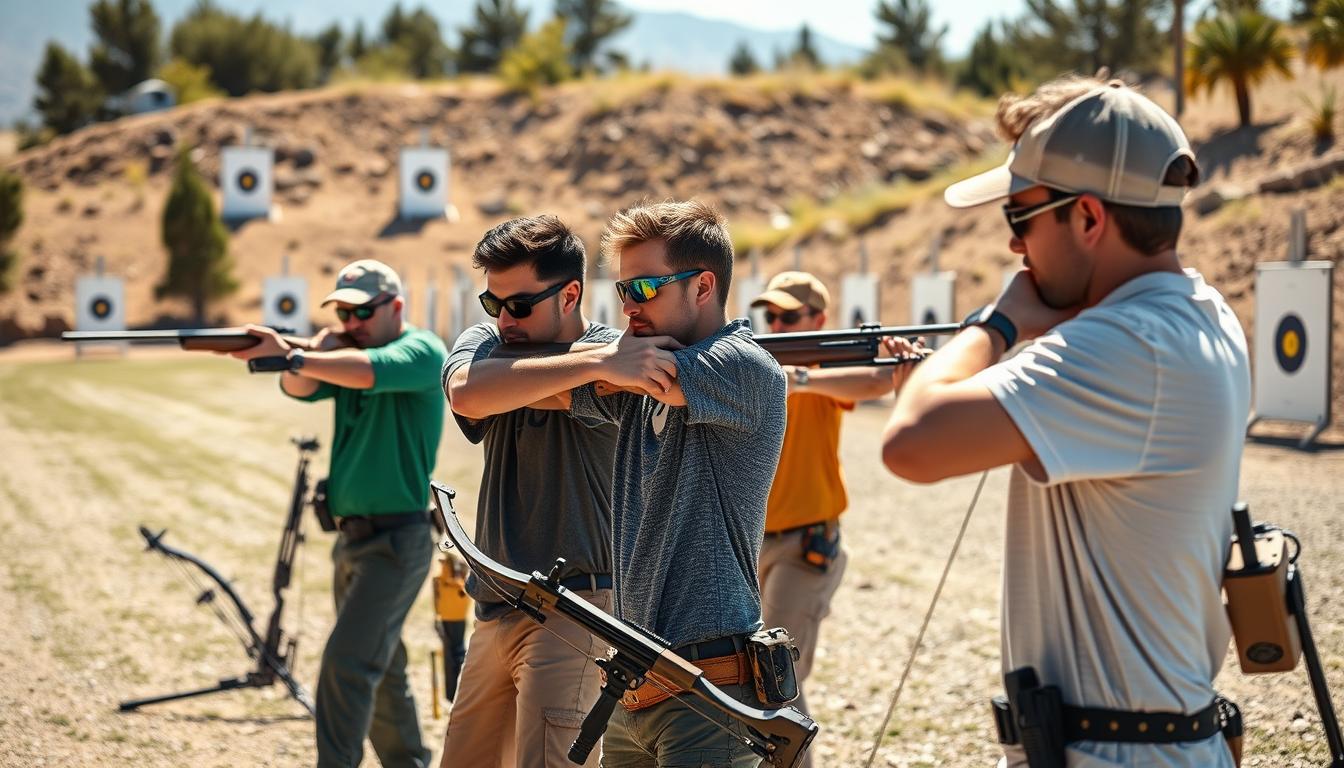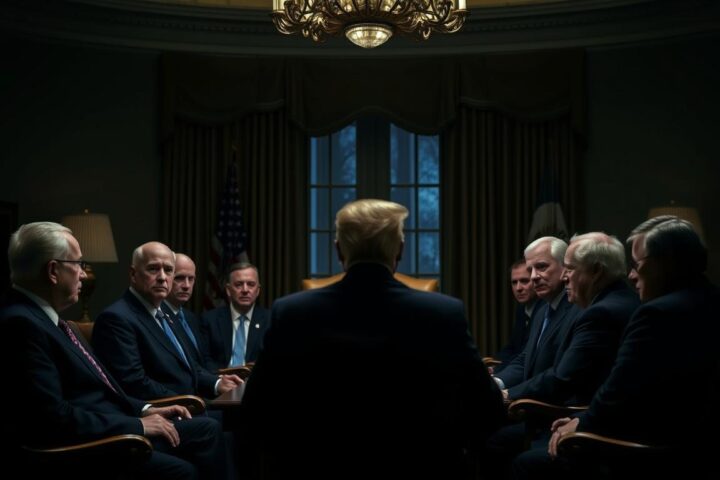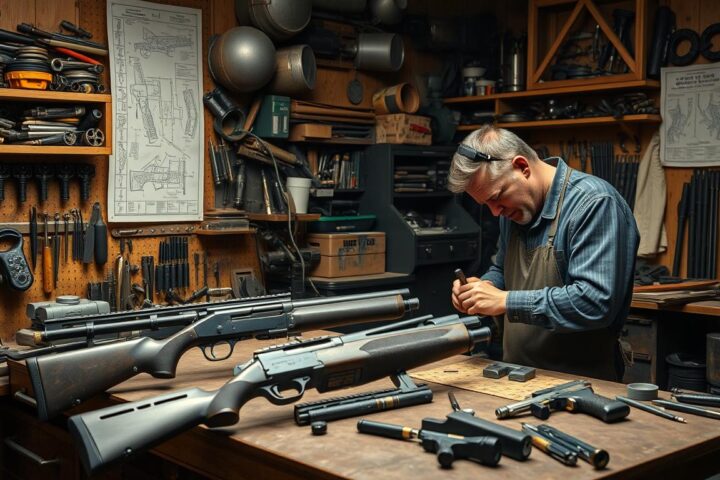Feeling stuck in your shooting skills journey is common. Whether you’re new or experienced, many things can slow you down. By focusing on firearms training and marksmanship, you might find what’s holding you back.
Improving your shooting is more than just pulling the trigger. It involves technique, the right gear, your mindset, and outside factors. This article will look at 76 reasons why your skills might not be growing. We’ll cover common errors, the need for gun safety, and equipment problems, all to help you improve your training.
Knowing what hinders your progress can lead to big improvements. By examining these challenges, you can find where to focus your efforts. This way, every shot you take will be more meaningful.
Key Takeaways
- Shooting skills improvement involves a combination of technical and mental factors.
- Common mistakes in technique can significantly impact your progress.
- Proper equipment and its maintenance are crucial for consistency.
- Gun safety is not just fundamental for safety but also for building reliable skills.
- Understanding psychological barriers can help overcome shooting plateaus.
- Access to quality training resources is essential for continuous improvement.
Common Mistakes in Shooting Techniques
Improving your marksmanship starts with fixing common shooting errors. One big mistake is having a bad grip and stance. Many shooters don’t hold their gun right or stand steady, which lowers their aim and control.
Another key issue is sight alignment. If your sights aren’t lined up right, hitting the target is hard. To fix this, work on your stance and aim consistently.
Don’t forget about trigger management. A quick or jerky trigger can mess up your shot. Practice smooth, steady trigger pulls to avoid this. For more on handling firearms, check out this range etiquette guide.
By focusing on these basics, you can cut down on bad habits and improve your skills. Keep practicing to overcome these issues and get better at shooting.
The Importance of Gun Safety in Skill Development
Gun safety rules are key to improving shooting skills. They help prevent accidents and boost shooting ability. A 2015 survey found 61% of U.S. firearm owners have had safety training.
By January 1, 2024, eight states and D.C. made safety training a must for gun purchases. These laws show how vital safety is for responsible gun use. Training programs teach how to handle, store, and use guns safely.
In 2021, 74% of U.S. adults backed the idea of a safety test for concealed-carry permits. A May 2022 survey showed one-third of gun owners think live-fire training is needed for permits. This shows people understand gun safety and shooting skills go hand in hand.
However, some training programs are not up to par. An audit found only 10% of instructors covered safety in suicide and domestic violence. This highlights the need for better education in firearms handling.
Effective safety training is all about the right content and delivery. Programs that teach well and change behavior can lower accidents and misuse. As the U.S. deals with gun issues, focusing on safety in training is key to better outcomes.
Equipment Issues Hampering Your Progress
Equipment can often hide behind as a reason for not improving your shooting skills. Problems like not maintaining your gun right, picking the wrong firearm, and issues with shooting gear can really hold you back. These issues can make it hard to do well and enjoy the sport.
Many shooters don’t realize how key proper gun maintenance is. Keeping your firearm clean and checked regularly makes sure it works right. This isn’t just about it working; it’s also about safety. It means every shot you take is as good as it can be.
Choosing the right firearm is also super important. A gun that doesn’t fit you or isn’t right for what you’re doing can mess up your aim and comfort. Whether you’re in a competition or just practicing for self-defense, picking a gun that fits you and your skills is key to getting better.
Also, shooting gear problems can slow you down. From ear protection that doesn’t fit right to holsters that don’t work well, every piece of gear matters. Getting gear that helps you rather than hinders you is vital for anyone looking to improve.
In short, fixing these equipment issues can really help you get better at shooting. By focusing on gun maintenance, picking the right gun, and solving gear problems, you can see big improvements. Taking the time to check and improve your equipment is a big step towards reaching your shooting goals.
Psychological Barriers to Shooting Improvement
Shooting well is not just about physical skill. It’s also about your mental state. Understanding and beating mental barriers can change a shooter’s game. Despite gun-related deaths, many face psychological hurdles.
Fear, anxiety, and wrong views on mental health hold shooters back. Mental training is key. It helps shooters stay focused and build confidence.
Visualization is a powerful tool. It lets shooters imagine the shooting process. This builds familiarity and confidence. Overcoming gun fear needs gradual exposure and education.
Managing stress and anxiety is crucial. Breathing techniques can help. They calm the mind and steady the hand.
Only 4% of criminal violence comes from the mentally ill. This shows the importance of mental calm. A stable mindset is essential for shooters.
Using comprehensive mental training strategies is vital. Resources like Red Gear Guru offer valuable insights. Overcoming fear and addressing mental barriers are key to improving shooting skills.
Challenges in Accessing Quality Training Resources
Finding good training for firearms is hard for many. It’s key to learn well, but it’s tough to find good instructors and courses. In some places, there just aren’t many certified programs.
Finding good instructors is like searching for a needle. Many websites promise quality, but not all deliver. This can make shooters feel let down and unready. Online resources help by offering variety and flexibility. Sites like Red Gear Guru help find trusted instructors.
Learning to shoot better is always important. Staying updated with new techniques and going to courses helps a lot. But, it’s crucial to learn from experts who follow strict safety rules. With more guns in the U.S., good training is more important than ever.
Quality training can be expensive. Many good schools charge a lot, which can stop some from learning. But, spending on good training is key for safety and getting better. Looking for cheaper options, like community programs, can help.
Making sure training is available and good is key to safety and skill. Finding reliable sources, like Red Gear Guru or local tips, is a big help.
Role of Physical Fitness in Shooting Accuracy
Physical fitness is key for a shooter’s accuracy. It boosts performance and sharpens the mind. A good training mix of strength, cardio, and flexibility is vital for better shooting.
Strength training is crucial for shooters. Focus on upper body muscles for holding and stabilizing the gun. Body weight exercises like push-ups and planks help a lot. Do eight to ten reps to build muscle and control gun movement.
Endurance is also vital. High-Intensity Interval Training (HIIT) for 30 minutes boosts heart health. Running and swimming for 20 minutes daily, five to six times a week, are good. Activities like cross-country skiing and cycling also help.
Stability and flexibility exercises are important too. Increase endurance workout hold times by five seconds each week. A 30-second seated stretch improves flexibility, helping keep a steady aim. Neck rolls and lunges also support a precise shot.
Physical fitness is essential for shooters. Elizabeth Harty, a top smallbore competitor, says being active and fit boosts scores and performance. Always check with a doctor before starting any exercise. For handgun maintenance tips, visit this guide.
The phrase “Mens sana in corpore sano” means a healthy mind in a healthy body. It sums up the importance of physical fitness in shooting. A mix of strength, stability, and stamina leads to better accuracy and performance.
Impacts of Firearm Regulations on Training
It’s important to know how firearm laws affect training. These laws are meant to keep us safe. But, they can also make training hard.
Legal rules for shooting vary a lot by state. This makes it tough for trainers and learners to follow the rules. Some places have strict rules for using guns, which limits training options.
These laws also affect how well people can handle guns. They make it hard to find good places to practice.
Firearm laws impact more than just safety. They also make it hard to find places to train. Even though the Second Amendment protects our right to bear arms, strict laws can limit our training.
Statistics play a big role in these laws. For example, over 44,000 gun deaths in 2022 led to calls for stricter laws. Many people want to raise the age to buy guns and make background checks mandatory. A study by Bridgewater University found 74% of Americans agree with raising the age to 21.
A study by Red Gear Guru also shows support for federal background checks and “Red Flag” laws. These laws aim to reduce violence. But, they can make it harder to get the training we need.
In conclusion, firearm laws do affect training. But, it’s crucial to understand and follow these laws for safe and responsible gun use.
The Influence of Gun Rights, Gun Safety, Second Amendments on Your Skills
The mix of Second Amendment rights and gun safety affects how well you can handle a gun. Laws like the Gun Control Act of 1968 shape how easy it is to get training.
Knowing about gun laws is key. Cases like District of Columbia v. Heller and McDonald v. Chicago are important. They say you have the right to own a gun for self-defense.
Gun safety is about handling guns the right way. It’s not just about following the law. It’s about being responsible and safe with your gun.
New laws on guns are always changing. Laws like the recent federal bipartisan gun safety laws are important. They help keep everyone safe without taking away your rights.
It’s important to understand both gun safety and rights. Some see laws as a challenge, but others see them as a chance to get better at handling guns.
Advanced Techniques Often Overlooked
Looking to improve your shooting skills? Mastering advanced techniques is key. Precision shooting and handling different scenarios can greatly enhance your skills. These methods will take you from a good shooter to an expert.
Controlled breathing and trigger control are often overlooked. By mastering breath control, you can stabilize your aim and improve accuracy. Keeping a steady position after shooting is also crucial for perfect alignment and timing.
Adapting to various shooting scenarios is also important. Exercises with moving targets and tactical shooting prepare you for real-world situations. These strategies sharpen your reflexes and build confidence in using expert marksmanship tips. For more on gun rights, check out this detailed analysis.
Lastly, dry fire practice is a safe and cost-effective way to improve. It lets you focus on mechanics without the noise or recoil of live ammo. Adding this to your routine can significantly improve your marksmanship and readiness.











